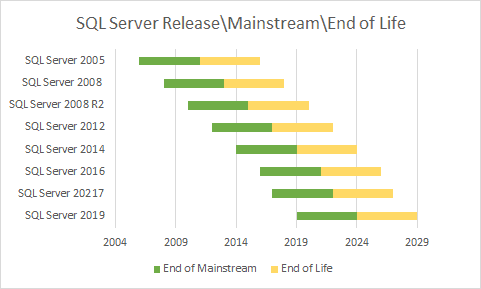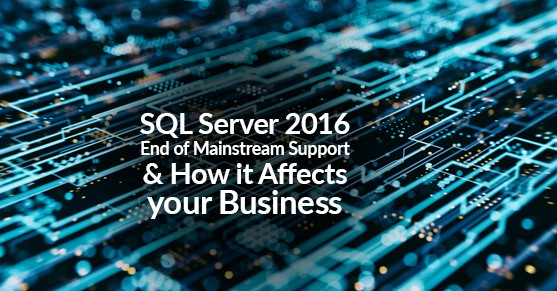July 13th, 2021 is quickly approaching. This is the date Microsoft has announced as the end of Mainstream Support for SQL Server 2016. What does this mean for the large number of Servers and applications using SQL Server 2016? You feel like you just completed your last migration project, do you have to start all over again? These are just a few of the common questions that many people ask when the end of Mainstream Support approaches.
In the words of our oh-so-loved and most (almost overly) quoted “Hitchhiker’s Guide to the Galaxy” – “Don’t Panic”.
Microsoft has 2 different types of support Policies: Fixed Lifecycle Policy and Modern Lifecycle Policy. SQL Server falls under the “Fixed” policy. Further information about the types of Policies can be found here.
Under the Fixed Lifecycle Policy, there are 2 different tiers of support for Microsoft SQL Server: Mainstream Support and Extended Support.
End of Mainstream Support
The end of Mainstream Support means Microsoft is no longer making enhancements to this version of SQL Server. They will continue to provide security and bug fixes for this version of SQL Server. If support is needed, there is a fee associated with the support call. If you are wanting newer features, you will need to upgrade to a version of SQL Server which currently supports the features you are interested in.
End of Extended Support
July 14th, 2026 is the end of Extended Support for SQL Server 2016. At this time Microsoft will no longer provide non security updates to the version of SQL Server and for most, security updates will not be provided unless you are a part of the Extended Security Updates program. More information on the End of Extended Support can be found here.
Where to go from here
Once the end of Mainstream Support occurs, planning for upgrading your SQL Server environment should become a part of your roadmap. Many applications can take up to a year to migrate to a newer version of SQL Server, so it’s best to start thinking about this roadmap as soon as possible and planning accordingly. This will ensure you never reach that panicked state. When planning your upgrade, try to upgrade to the most recent version of SQL Server to give you more time before having to plan an upgrade again. And most importantly, stay updated on Mainstream and Extended Support changes and dates so you are not caught by surprise.


